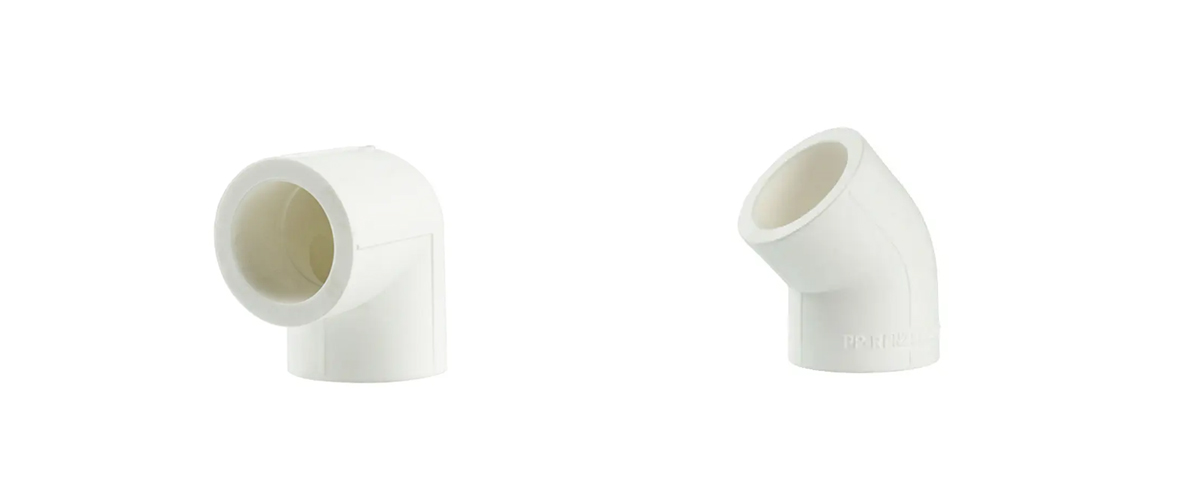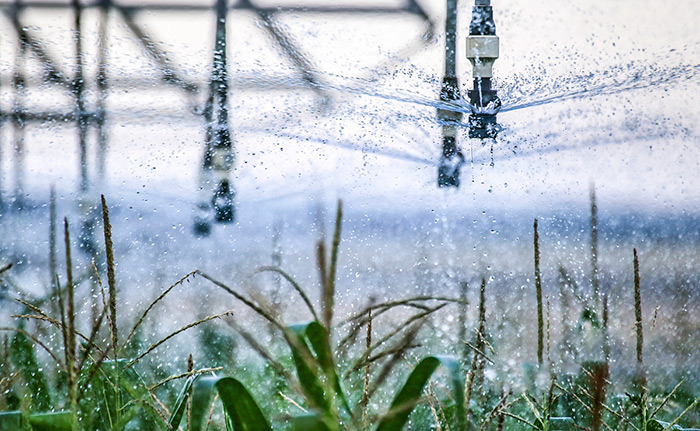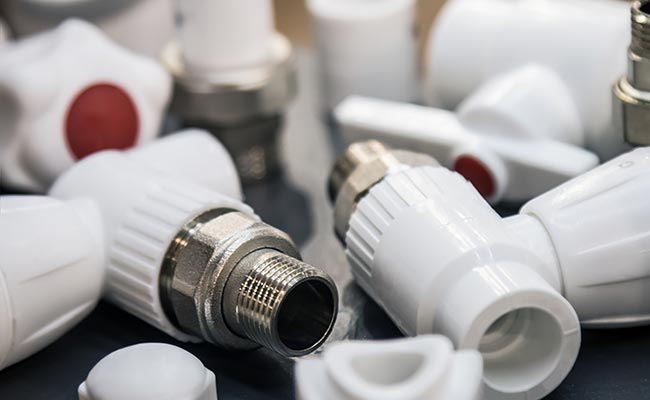
Choosing the right elbow for a piping system can feel tricky. Both 45-degree and 90-degree elbows serve unique purposes. A 45-degree elbow ensures smoother flow and less pressure loss. In fact:
- The resistance coefficient for a 45-degree elbow varies by about ±10 percent.
- For a 90-degree elbow, this variation rises to around ±20 percent in pipes over 2 inches.
PPR fittings, including the PPR Reducing Elbow, offer excellent durability and heat resistance. They are widely used in construction, plumbing, and industrial sectors due to their ability to handle high temperatures and resist corrosion.
Key Takeaways
- A 45-degree PPR elbow lets water flow smoothly with less pressure drop. It works well for systems needing steady water pressure.
- A 90-degree PPR elbow fits in small spaces. It helps pipes make sharp turns but can cause more water movement issues.
- Pick the right elbow based on your pipe setup. Check your space and water flow needs to decide.
Overview of PPR Pipes and Fittings
Characteristics of PPR Pipes
PPR pipes stand out for their durability and performance. They’re flexible, making them ideal for installations in tight or complex spaces. Their thermal resistance allows them to handle temperatures up to 95°C, making them perfect for hot water systems. These pipes also resist scaling and corrosion, ensuring a long lifespan with minimal maintenance.
| Characteristic | Description |
|---|---|
| Flexibility | Easily bent or curved for installation in complex areas. |
| Thermal Resistance | Handles temperatures up to 70-95°C, suitable for high-temperature applications. |
| Longevity | Resistant to scaling and corrosion, reducing maintenance costs. |
| Hygienic | Non-toxic, ensuring safe drinking water without harmful substances. |
| Leak-Proof | Heat fusion welding creates seamless and reliable connections. |
Benefits of Using PPR Fittings
PPR fittings offer several advantages over traditional materials. They’re durable, resisting rust and corrosion, which extends the lifespan of plumbing systems. Their excellent thermal insulation reduces heat loss, making them energy-efficient. Plus, they’re environmentally friendly, as they’re made from recyclable materials that contribute to waste reduction.
- Durability: PPR fittings don’t corrode or rust, ensuring long-lasting performance.
- Energy Efficiency: Their thermal insulation properties minimize heat loss, saving energy.
- Environmental Impact: Recyclable materials reduce waste and emissions.
- Versatility: Suitable for hot and cold water systems, as well as renewable energy applications.
Introduction to PPR Reducing Elbow
The PPR Reducing Elbow is a specialized fitting designed for efficient fluid flow in pressure systems. Its 90-degree angle minimizes turbulence, ensuring smooth movement through the pipes. The inner surface reduces friction, which helps prevent pressure loss and improves energy efficiency. These elbows also enable seamless direction changes, making them essential for plumbing systems that require durability and heat resistance.
- Smooth inner surface reduces friction and pressure loss.
- Enables efficient flow and operation across the system.
- Resistant to corrosion and heat, enhancing durability.
What is a 45-Degree PPR Elbow?
Definition and Characteristics
A 45-degree PPR elbow is a pipe fitting designed to connect two sections of PPR pipes at a 45-degree angle. This angled design allows for smoother directional changes in piping systems, reducing turbulence and pressure loss. Its inner surface is smooth, which minimizes friction and ensures efficient fluid flow. These elbows are made from high-quality polypropylene random copolymer (PPR), making them durable and resistant to heat and corrosion.
The 45-degree PPR elbow is lightweight and easy to handle, making it a popular choice for both residential and industrial applications. Its heat fusion welding capability ensures leak-proof connections, which is essential for maintaining the integrity of water supply systems.
Common Applications
The 45-degree PPR elbow is widely used in various settings due to its versatility and efficiency. It is commonly installed in:
- Residential Plumbing: Ideal for hot and cold water systems in homes.
- Industrial Systems: Used in factories for transporting chemicals or high-temperature fluids.
- Renewable Energy Systems: Suitable for solar water heating systems due to its heat resistance.
| Advantage | Description |
|---|---|
| Durability | Long-lasting and resistant to wear and tear. |
| Corrosion Resistance | Not prone to rust or degradation over time. |
| Ease of Installation | Simple to install, reducing labor costs. |
These applications highlight the elbow’s ability to handle diverse requirements while maintaining efficiency and reliability.
Advantages of Using a 45-Degree Elbow
The 45-degree PPR elbow offers several benefits that make it a preferred choice for many piping systems:
- Smoother Flow: The angled design reduces turbulence, ensuring a steady flow of water or other fluids.
- Lower Pressure Loss: Compared to a 90-degree elbow, it minimizes pressure drop, which improves system efficiency.
- Energy Efficiency: By reducing friction and pressure loss, it helps conserve energy in pumping systems.
- Durability: Its resistance to heat and corrosion ensures a long lifespan, even in demanding environments.
- Versatility: Suitable for a wide range of applications, from residential plumbing to industrial systems.
The 45-degree elbow also complements other fittings like the PPR Reducing Elbow, enhancing the overall performance of piping systems.
Limitations of a 45-Degree Elbow
While the 45-degree PPR elbow has many advantages, it may not be suitable for every situation. Its gradual angle requires more space for installation, which can be a challenge in tight or confined areas. Additionally, it may not provide the sharp directional changes needed in some piping layouts.
Despite these limitations, the 45-degree elbow remains an excellent choice for systems prioritizing smooth flow and reduced pressure loss. When paired with other fittings like the PPR Reducing Elbow, it can address a variety of piping challenges effectively.
What is a 90-Degree PPR Elbow?
Definition and Characteristics
A 90-degree PPR elbow is a pipe fitting designed to connect two sections of PPR pipes at a sharp right angle. This fitting is ideal for situations where pipes need to make abrupt directional changes, especially in tight or confined spaces. Its compact design allows it to fit seamlessly into areas with limited room, making it a go-to choice for complex piping layouts.
Made from high-quality polypropylene random copolymer (PPR), the 90-degree elbow offers excellent durability and resistance to heat and corrosion. Its smooth inner surface minimizes friction, ensuring efficient fluid flow while reducing the risk of pressure loss. The elbow’s heat fusion welding capability creates leak-proof connections, which are essential for maintaining the integrity of water supply systems.
Common Applications
The 90-degree PPR elbow is widely used in various industries and settings due to its ability to navigate tight spaces and sharp turns. Some typical applications include:
- Residential Plumbing: Perfect for compact spaces like under sinks or behind walls.
- Industrial Systems: Used in factories to route pipes around machinery or obstacles.
- Renewable Energy Systems: Ideal for solar water heating systems requiring precise directional changes.
| Study | Focus | Publication |
|---|---|---|
| El-Gammal et al. (2010) | Hydrodynamic effects on flow accelerated corrosion | Nuclear Engineering and Design, Vol. 240 |
| Liu et al. (2017) | Effect of flow velocity on erosion-corrosion | Wear DOI: 10.1016/j.wear.2016.11.015 |
| Zeng et al. (2016) | Erosion-corrosion at different locations | Corros. Sci. 111, pp. 72, DOI: 10.1016/j.corsci.2016.05.004 |
These studies highlight the elbow’s effectiveness in constrained installations, where space optimization and fluid dynamics are critical.
Advantages of Using a 90-Degree Elbow
The 90-degree PPR elbow offers several benefits that make it indispensable in modern piping systems:
- Efficient Routing: Its sharp angle allows pipes to navigate around obstacles, optimizing installation space.
- Minimized Pressure Drop: The smooth inner surface reduces turbulence, enhancing fluid dynamics.
- Enhanced System Flexibility: It supports adaptable piping layouts, which are crucial for navigating limited spaces and complex configurations.
| Advantage | Description |
|---|---|
| Efficient Routing | 90-degree elbows facilitate the routing of pipes around obstacles, optimizing installation space. |
| Minimized Pressure Drop | These elbows reduce pressure drop by providing smoother transitions, enhancing fluid dynamics. |
| Enhanced System Flexibility | Elbows allow for adaptable piping layouts, crucial for navigating limited spaces and complex configurations. |
The 90-degree elbow also complements other fittings, such as the PPR Reducing Elbow, to create efficient and durable piping systems.
Limitations of a 90-Degree Elbow
While the 90-degree PPR elbow excels in many scenarios, it does have some limitations. Research findings reveal potential risks associated with its use:
- The study indicates that 90-degree configurations, particularly threaded cast iron elbow fittings, have significant limitations in seismic performance and failure modes.
- Although no damage was observed in elbow fittings during testing, vulnerabilities were identified in tee fittings under different loading configurations, suggesting that secondary configurations are more susceptible to severe damage.
- The findings call for a reevaluation of design assumptions regarding fitting rigidity in seismic applications, as excessive rotation could lead to leakage failures.
Despite these challenges, the 90-degree elbow remains a reliable choice for most piping systems, especially when paired with other fittings like the PPR Reducing Elbow to enhance overall performance.
Key Differences Between 45-Degree and 90-Degree PPR Elbows
Angle and Flow Direction
The main difference between these two elbows lies in their angle. A 45-degree elbow changes the pipe’s direction by 45 degrees, creating a smoother flow path. On the other hand, a 90-degree elbow makes a sharp right-angle turn. This sharper angle can cause more turbulence in the flow.
Here’s a quick comparison:
| Elbow Type | Angle Change | Flow Characteristics |
|---|---|---|
| 45 Degree Elbow | 45 degrees | Smoother flow with less turbulence and pressure drop. |
| 90 Degree Elbow | 90 degrees | Causes more turbulence and pressure loss. |
The smoother flow of the 45-degree elbow makes it ideal for systems where maintaining steady pressure is crucial. Meanwhile, the 90-degree elbow works better in setups requiring sharp turns.
Impact on Flow Characteristics
The angle of the elbow directly affects how fluids move through the pipe. A 45-degree elbow reduces turbulence, which helps maintain consistent pressure and flow. This makes it energy-efficient, especially in systems like water supply lines.
In contrast, a 90-degree elbow creates more turbulence. This can lead to higher pressure loss, which might require additional energy to maintain flow. However, its compact design makes it a practical choice for tight spaces.
Space and Installation Considerations
Space plays a big role in choosing between these two elbows. A 45-degree elbow needs more room for installation due to its gradual angle. This can be challenging in confined areas.
A 90-degree elbow, with its sharp turn, fits easily into tight spaces. It’s often used in areas like under sinks or behind walls where space is limited. The PPR Reducing Elbow, which combines the benefits of a 90-degree angle with size adaptability, is a great option for such setups.
Suitability for Different Scenarios
Each elbow has its strengths depending on the situation. A 45-degree elbow is perfect for systems prioritizing smooth flow and energy efficiency, such as residential plumbing or industrial pipelines.
A 90-degree elbow works best in scenarios requiring sharp directional changes, like navigating around obstacles in compact installations. Its versatility makes it a popular choice in both residential and industrial settings.
Both 45-degree and 90-degree PPR elbows serve different purposes. A 45-degree elbow ensures smoother flow and less pressure loss, making it great for gradual turns. A 90-degree elbow works best in tight spaces with sharp turns.
Post time: May-10-2025




